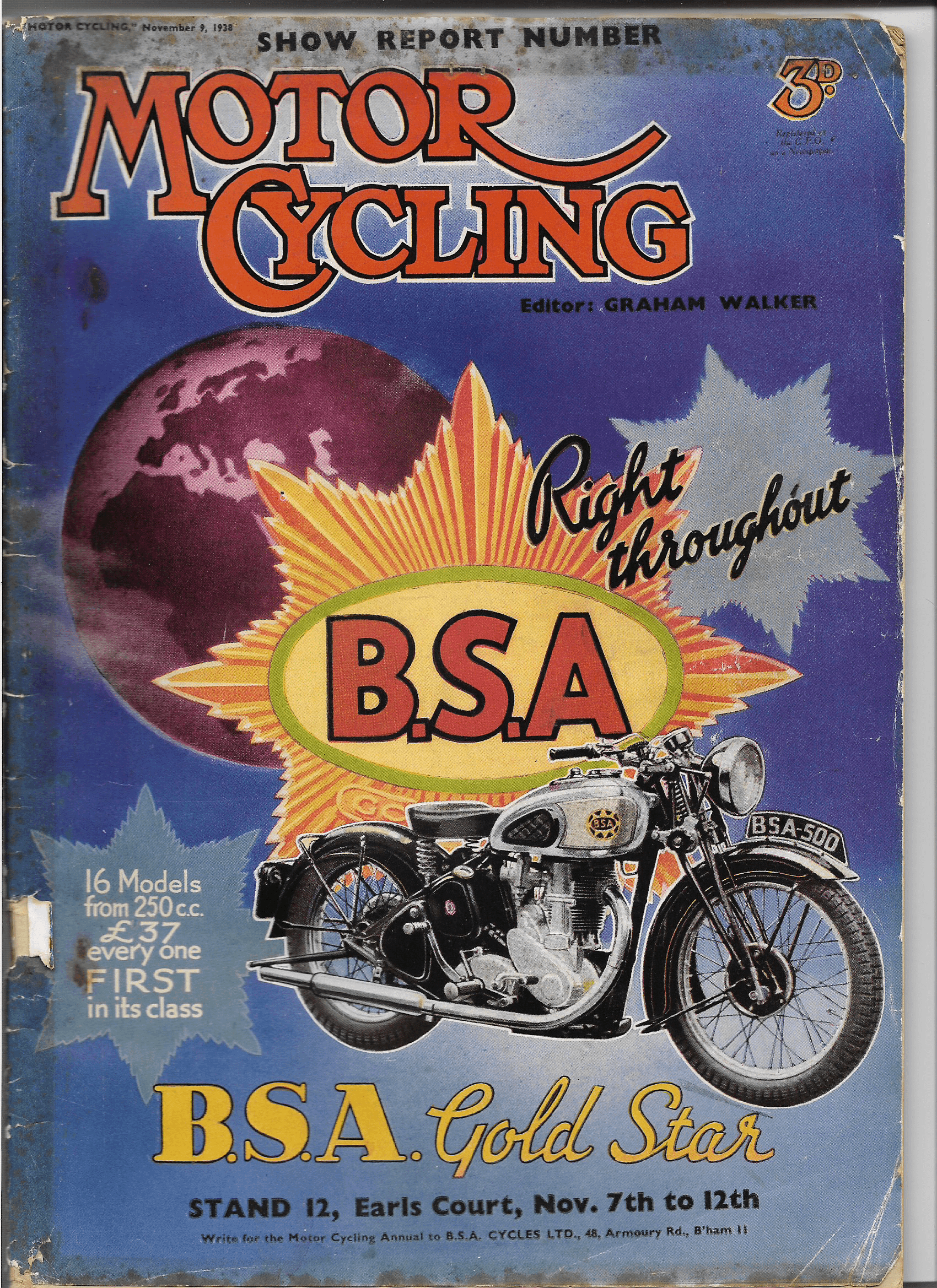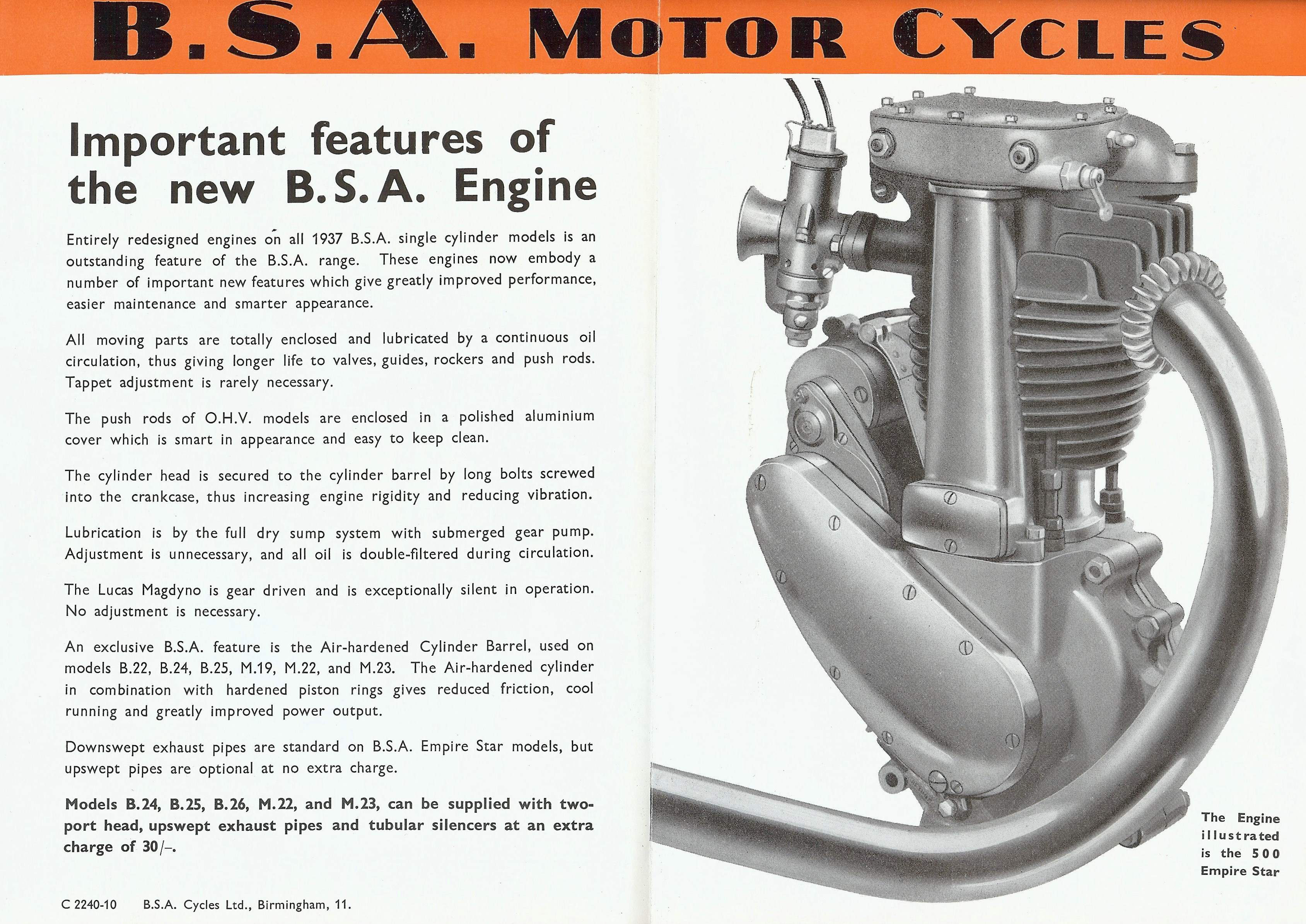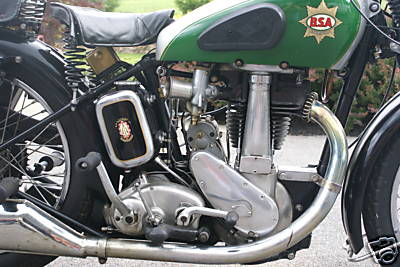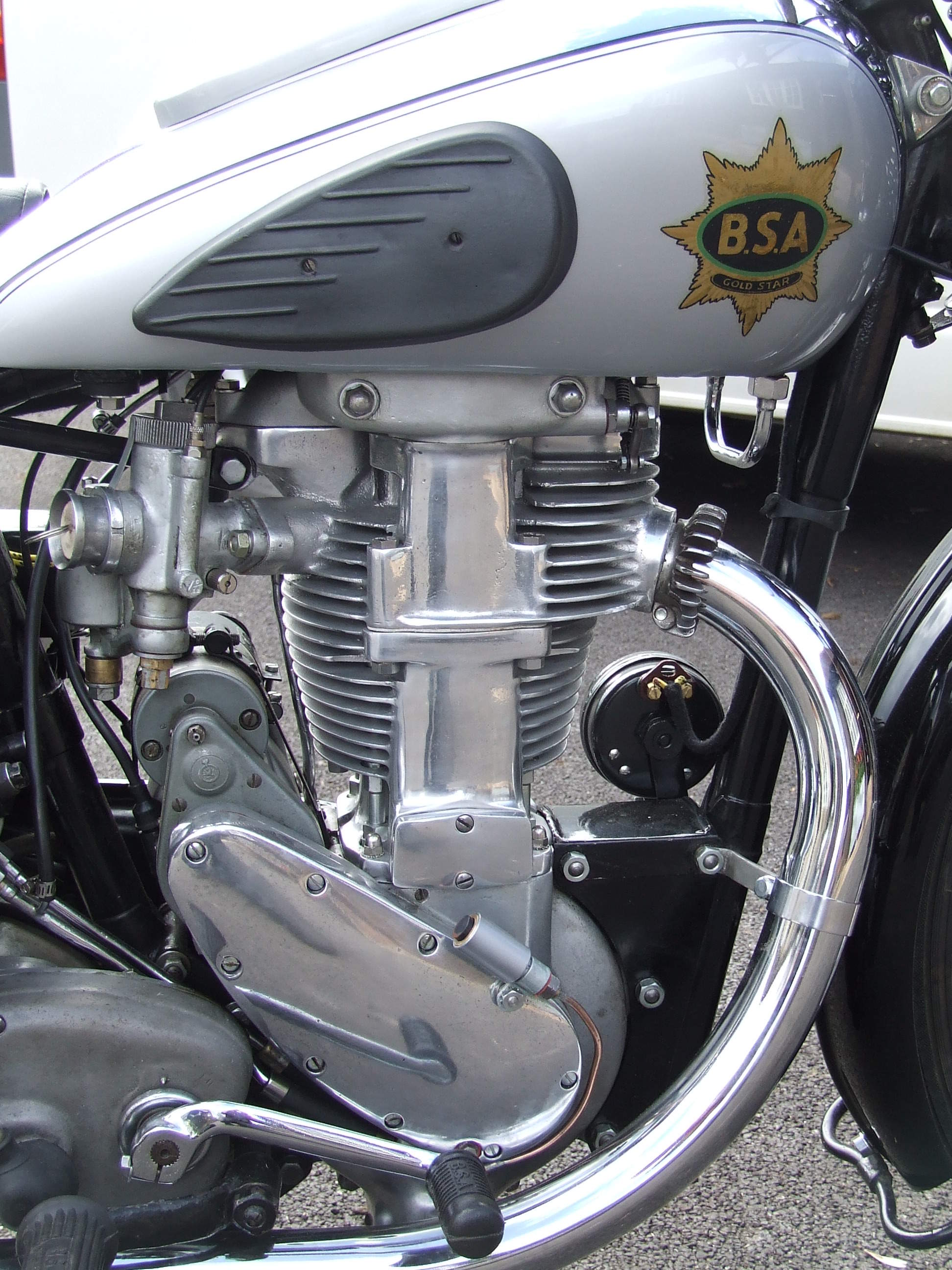The 1938 BSA M24 Gold Star
The first production Gold Stars differed in certain minor details from the prototype illustrated in the BSA catalogue for 1938. To overcome oil leakage problems, the cylinder head and barrel castings were altered to incorporate two additional cylinder head fixing bolts on either side of the push rod tunnel, and the rocker box was recast with two additional mounting bosses, again to overcome oil leaks. An Amal 10TT36 Carburettor was fitted in place of the standard Amal type 89. The silencer on the production bikes had a separate tail pipe, so that the overall length of the exhaust could be adjusted for optimum performance.
Production of 1938 Gold Stars continued until the autumn of 1938, when the factory switched to production of the new 1939 model. The last one, frame JM24 404 with engine JM24 365, was despatched on 6th July 1939 to the British Army for the 1939 ISDT.




